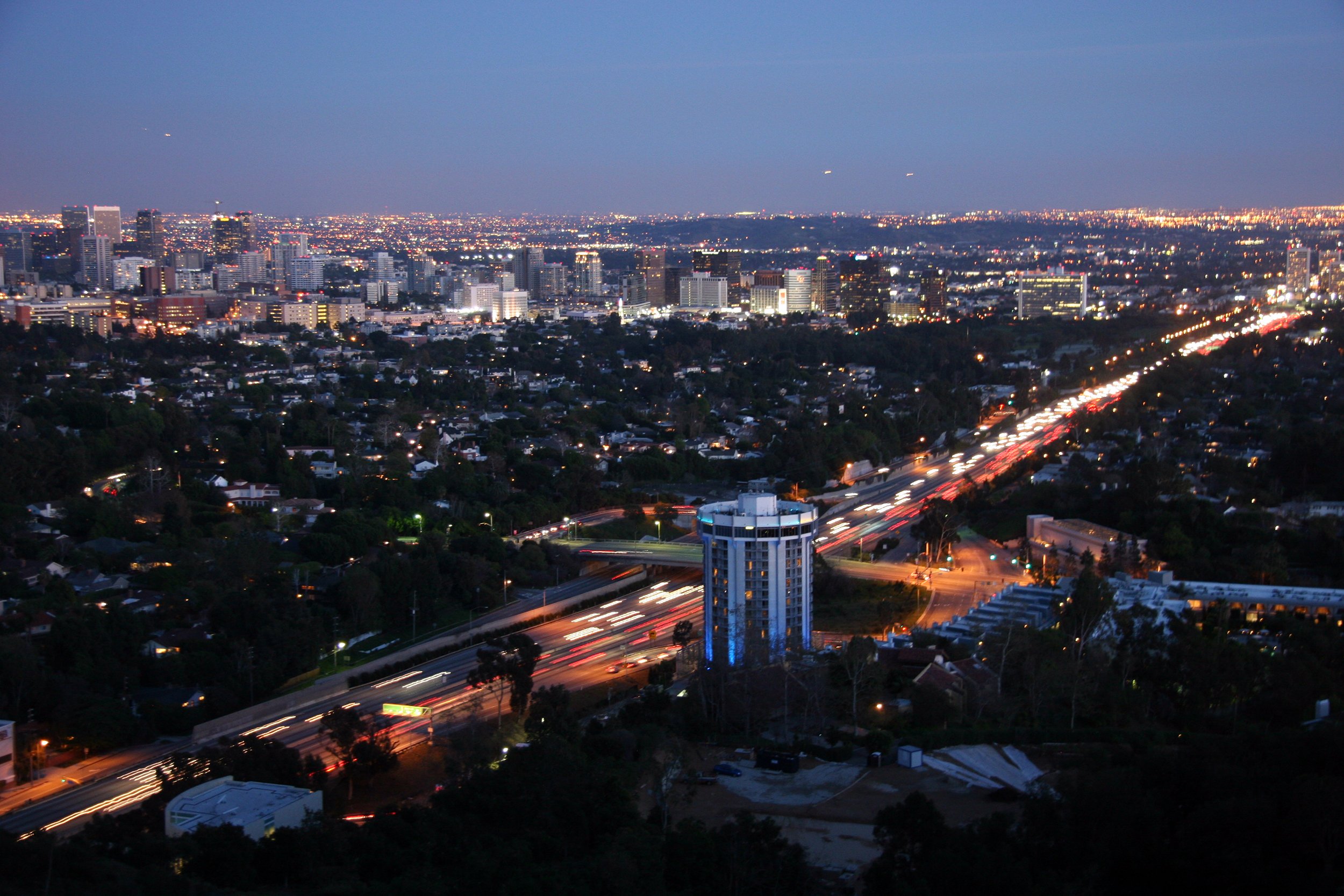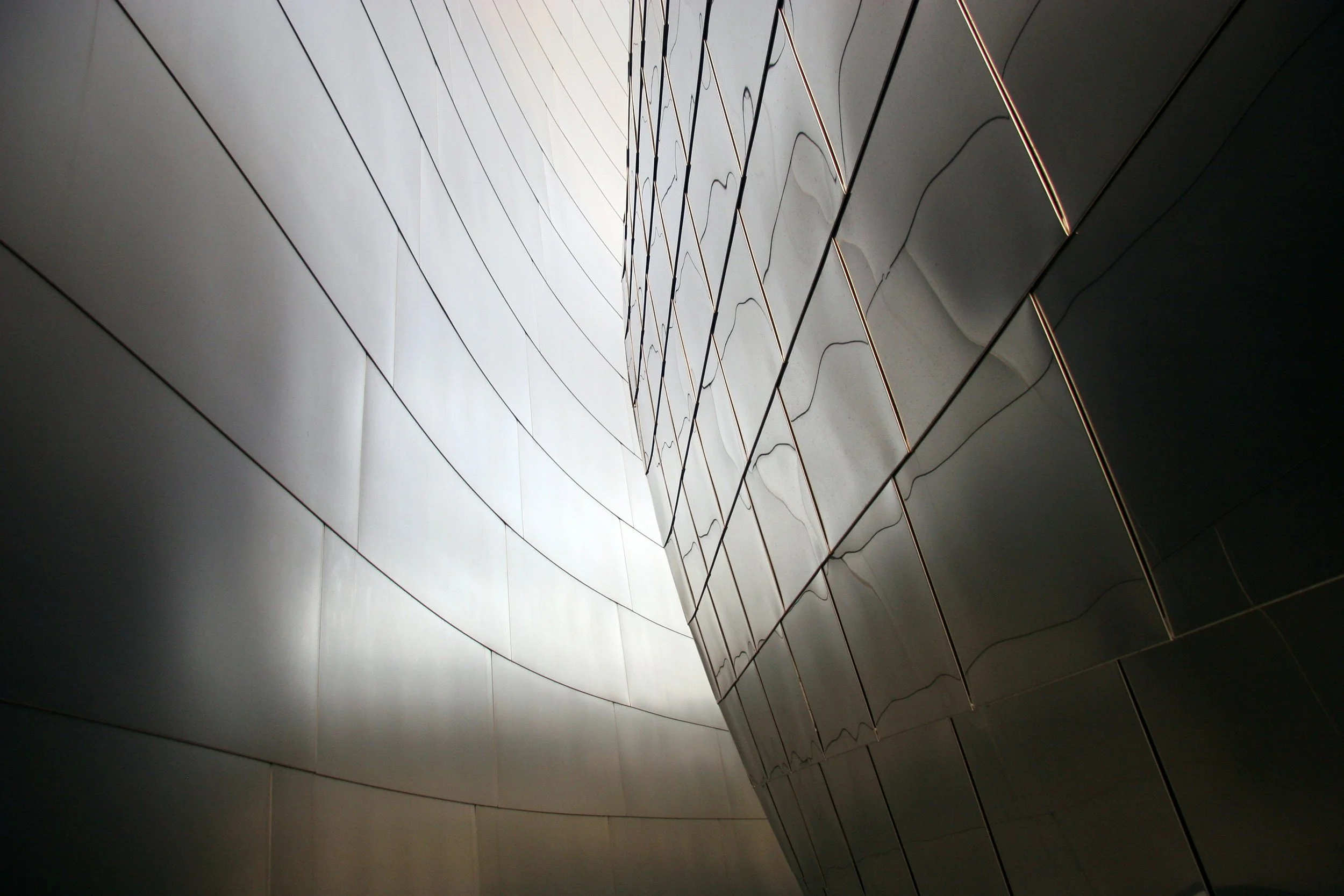
Page 1 of 3
Los Angeles, California
And a season to sleep and a place to get clean, maybe Los Angeles, somewhere no one's expecting
On two consecutive weekends way back in February, I went on two consecutive short notice work related trips to Los Angeles for separate, generally unrelated jobs. Both trips were welcome, as over time Los Angeles has really grown into of my favorite places. Maybe it's the land, sea and hills (or mountains as we would call them if they were out here). Maybe it's the architecture, it's a city and region with great buildings all over the place (if you know where to look). Maybe it's the city's love of cars and freeways, a place where downtown speed limits are 65 mph, where there's no shame in driving and where there's always a way around the traffic, especially if you're not scared to find a winding, local street. Maybe it's the city's sense of impending doom, earthquakes and fires and mudslides and drunken, swearing starlets seem to be waiting to pounce at almost every turn. Or maybe it's just the fact that there are damn tasty burgers waiting in every direction at a local In-N-Out Burger. Come to think of it, forget all that other stuff. It's probably just all about the burgers.
One of the newer, significant buildings in Los Angeles is the Eli Broad Contemporary Art Museum at the sprawling and out of control Los Angeles County Museum of Art (or LACMA for short). Located on the Miracle Mile, a section of Wilshire Boulevard at the tar pits halfway between Beverly Hills and where the purple line ends, the museum is a series of architecturally unrelated buildings that are starting to be integrated into a campus by Italian architect Renzo Piano. The Eli Broad Contemporary Art Museum is his biggest intervention thus far, but other interventions include an awfully light (or perhaps slight) series of red breezeways, an underground parking lot and a new entrance plaza. The entrance plaza is basically an outdoor space with a canopy that is saved only by the light pole installation adjacent to it, Urban Light by artist Chris Burden. Taken individually those light poles are nothing special, but if you decide to throw a few hundred up right next to each other and then maybe, just maybe you might just start to have something.
While I remain a fan of Renzo Piano and really love the actual new museum building at LACMA, those candy apple red breezeways are a completely different story. They feel more like a 1975 Holiday Inn than an intervention by a world class architect. On plan they look interesting but in person they look like something between a mistake and an afterthought.
The building on the other hand is everything the breezeways aren't. It's upper floor is bathed in light from the spectacular glass ceiling skylight/sunshade system that makes recent Piano buildings so popular, and its giant glass elevator works surprisingly well. As for the art, it's certainly not bad upstairs and totally spectacular downstairs- LACMA bought the two best of the Richard Serra walk through sculptures from the MoMA show two years ago and they occupy the building's entire ground floor. Seriously if you missed them in New York you should consider flying out to Los Angeles just to see them in person at LACMA, they are just that good. Trust me.
The only really effective experience from the red canopies comes at the entrance of the Eli Broad Contemporary Art Museum. Visitors take an exterior red escalator (see previous slides) and are thrust to top floor of the building and its main entrance, an odd choice but a real chance to see a spectacular view north toward the Hollywood Hills. After the thrill of starting up top, you are then faced with the choice of waiting for that damn cool giant glass elevator or going back outside and walking down the exterior red stair to a lower floor. Another odd choice if you ask me.
As for the construction, it is the start of another Piano building very similar to the Eli Broad Contemporary Art Museum in terms of its design and glass ceiling skylight/sunshade system. When completed it is slated to host big time temporary art exhibitions that I'm sure will serve as another flimsy excuse for me to come back and visit Los Angeles and LACMA again and again.
Grand Avenue in downtown Los Angeles has quickly developed into a murder's row of kick ass contemporary architecture. Starting it all off was Arata Isozaki's ok MoCA museum (a little staid but certainly fine), then Frank Gehry's slow to start Disney Concert Hall, then Rafael Moneo's cathedral and now Coop Himmelblau's (or Himmelb(l)au's) yet to be opened but certainly show stopping arts high school for the Los Angeles Unified School District.
This first glimpse of the side by side by side buildings takes in two of them. Through the protective glass screens of the cathedral's plaza and right over the sunken Hollywood Freeway stands your first view of the Coop Himmelblau building. Standing on the plaza taking pictures, it was easy and unmistakable to overhear person after person ignoring the cathedral around them and instead looking through the glass and saying over and over (in multiple languages) words to the effect of "what the hell is that?"
Whoa.
Still unopened but most certainly still intriguing, LAUSD High School 9 landed, uh, was built on a choice, high visibility site (at Grand Avenue and the Hollywood Freeway) by Austrian architects Coop Himmelblau, a firm name with translates into English as Blue Sky Collaborative or Sky Build Collaborative when you put that (l) in parentheses. From the outside it's hard to tell what is what, to tell whether or not that metal spiral does anything, whether or not that entrance pyramid is as spectacular as it might be or whether or not a great exterior composition will be strengthen or destroyed by great or horrible design choices on the inside. Can't wait to find out.
As the high school's elevation drops along with Grand Avenue, an elevation of giant circles proves yet again the undeniable truth that everyone loves giant circles.
Not the first or the last pictures you'll see from me of Rafael Moneo's spectacular (in person) Cathedral of Our Lady of the Angels. This first picture is the Grand Avenue view under a well lit stormy sky, the view of the backside of a building where all of the real magic happens inside.

